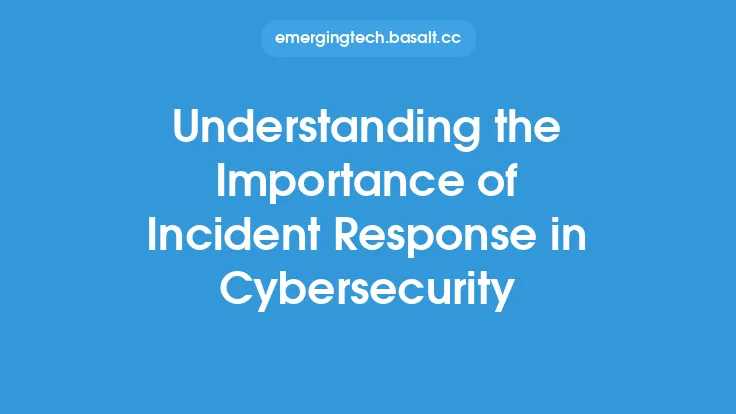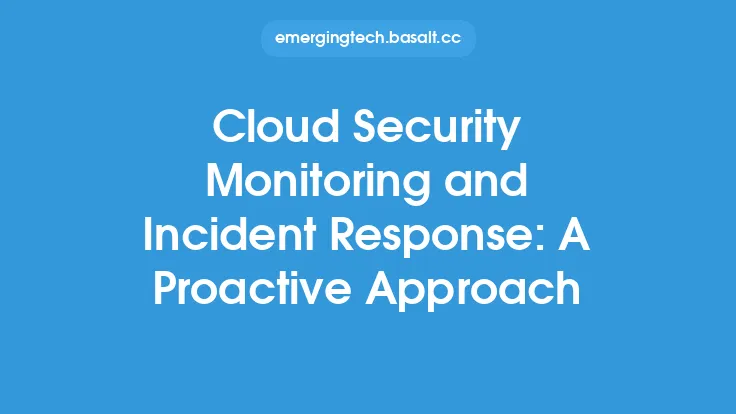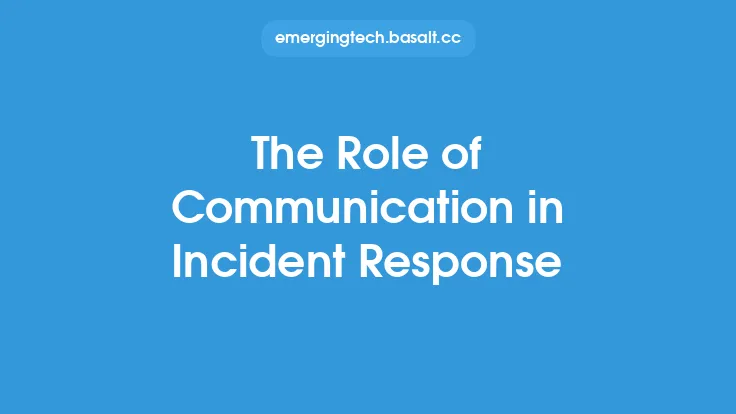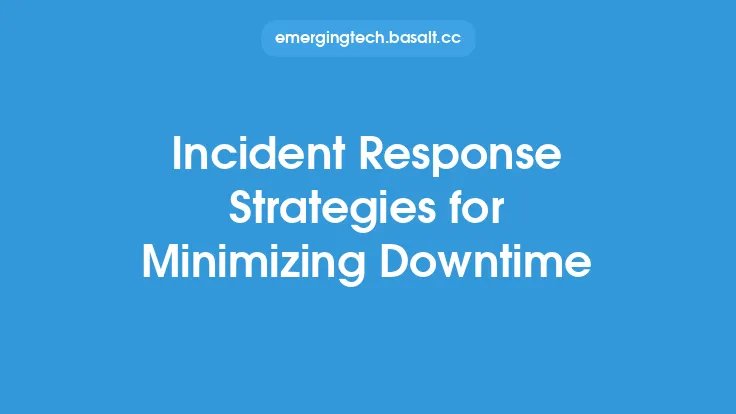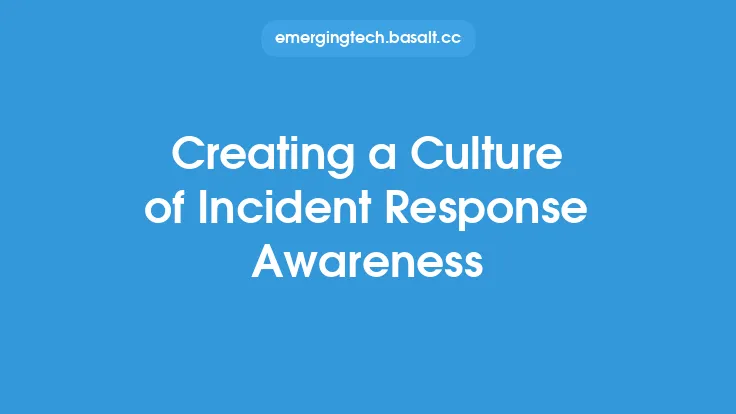Creating a comprehensive incident response plan is a crucial aspect of any organization's cybersecurity strategy. This plan serves as a roadmap for responding to and managing security incidents, such as data breaches, malware outbreaks, or denial-of-service attacks, in a timely and effective manner. A well-crafted incident response plan can help minimize the impact of a security incident, reduce downtime, and prevent future incidents from occurring.
Understanding Incident Response
Incident response is the process of responding to and managing security incidents. It involves a series of steps, including detection, containment, eradication, recovery, and post-incident activities. The goal of incident response is to quickly and effectively respond to security incidents, minimize the impact of the incident, and prevent future incidents from occurring. Incident response involves a range of activities, including identifying and assessing the incident, containing the damage, eradicating the root cause of the incident, recovering from the incident, and conducting post-incident activities.
Key Components of an Incident Response Plan
An effective incident response plan should include several key components, including:
- Incident classification: A system for classifying incidents based on their severity and impact. This helps to ensure that incidents are prioritized and responded to accordingly.
- Incident response team: A team of individuals who are responsible for responding to security incidents. This team should include representatives from various departments, including IT, security, and communications.
- Incident response procedures: A set of procedures that outline the steps to be taken in response to a security incident. These procedures should include guidelines for containment, eradication, recovery, and post-incident activities.
- Communication plan: A plan for communicating with stakeholders, including employees, customers, and the media, during a security incident.
- Training and awareness: A program for training and awareness that ensures all employees understand their roles and responsibilities in responding to security incidents.
- Continuous monitoring and review: A process for continuously monitoring and reviewing the incident response plan to ensure it remains effective and up-to-date.
Developing an Incident Response Plan
Developing an incident response plan involves several steps, including:
- Conducting a risk assessment: Identifying potential security risks and threats to the organization.
- Establishing incident response goals and objectives: Defining the goals and objectives of the incident response plan, including minimizing downtime and preventing future incidents.
- Identifying incident response team members: Selecting individuals to be part of the incident response team.
- Developing incident response procedures: Creating procedures for responding to security incidents, including containment, eradication, recovery, and post-incident activities.
- Creating a communication plan: Developing a plan for communicating with stakeholders during a security incident.
- Testing and reviewing the plan: Testing and reviewing the incident response plan to ensure it is effective and up-to-date.
Implementing an Incident Response Plan
Implementing an incident response plan involves several steps, including:
- Training incident response team members: Providing training to incident response team members on their roles and responsibilities.
- Conducting regular exercises and drills: Conducting regular exercises and drills to test the incident response plan and ensure it is effective.
- Continuously monitoring and reviewing the plan: Continuously monitoring and reviewing the incident response plan to ensure it remains effective and up-to-date.
- Communicating the plan to stakeholders: Communicating the incident response plan to stakeholders, including employees, customers, and the media.
- Reviewing and updating the plan: Reviewing and updating the incident response plan on a regular basis to ensure it remains effective and relevant.
Technical Considerations
From a technical perspective, an incident response plan should include several key considerations, including:
- Network segmentation: Segmenting the network to prevent the spread of malware and unauthorized access.
- Firewall configuration: Configuring firewalls to block unauthorized access to the network.
- Intrusion detection and prevention systems: Implementing intrusion detection and prevention systems to detect and prevent security incidents.
- Encryption: Encrypting sensitive data to prevent unauthorized access.
- Backup and recovery: Implementing backup and recovery procedures to ensure business continuity in the event of a security incident.
Incident Response Tools and Technologies
Several tools and technologies can be used to support incident response, including:
- Incident response platforms: Platforms that provide a centralized interface for managing incident response activities.
- Security information and event management (SIEM) systems: Systems that provide real-time monitoring and analysis of security-related data.
- Threat intelligence platforms: Platforms that provide threat intelligence and analytics to support incident response.
- Vulnerability management tools: Tools that provide vulnerability management and remediation capabilities.
- Communication and collaboration tools: Tools that provide communication and collaboration capabilities to support incident response team members.
Conclusion
Building an effective incident response plan is a critical aspect of any organization's cybersecurity strategy. By understanding incident response, developing a comprehensive incident response plan, implementing the plan, and considering technical and tool-based solutions, organizations can minimize the impact of security incidents, reduce downtime, and prevent future incidents from occurring. Remember, incident response is an ongoing process that requires continuous monitoring, review, and improvement to ensure the plan remains effective and up-to-date.
